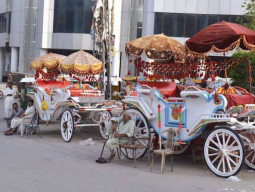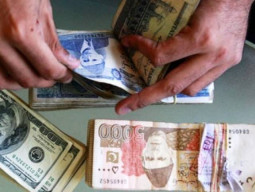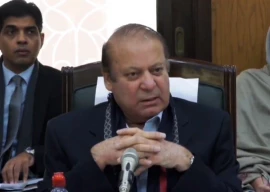
Rock art has been discovered from all over the world, including Pakistan. The province of Sindh in particular is rich in rock art. Ancient inscriptions have been found in the rock art of Sindh. These inscriptions have been discovered in the Khirthar Mountainous Range and in Thatta.
The rock art of Sindh is characteristically different from that discovered in other parts of Pakistan. In Sindh’s rock art some characters of inscriptions are deeply carved with pounding and pointing techniques and others are engraved with a rubbing technique.
The art is mostly etched on sandstone and iron sedimentary rocks. Three main themes come into view in the rocks of Sindh, 1) the engravings of different animals, 2) the depiction of religious symbols or structures of Buddhism, Hinduism and Zoroastrianism and 3) ancient inscriptions inscribed on rock shelters.
The inscriptions of the Indus seals can be considered as an evidence of the linkage between the urban society of the Indus valley civilisation and its towns, villages and other remote areas in Sindh.
Thus, the Indus Script or the writing system of Indus civilisation is still continued in remote areas of Sindh. The Indus script found in the rock art of Sindh is quite different from that discovered in the Indus seals and the Saraswati script as well as Sanskrit. Such variant ancient Indus script has also been found on rock shelters in the Pabu Mountain, inside the Tharia Cave at Pallimas valley of Balochistan, which borders with Johi taluka in district Dadu.
It seems that variant scripts were prevalent here in these localities of Sindh after the Indus and Sarswati scripts and before the development and evolution of Sanskrit, Brahmi and other Indo-Aryan scripts. Most probably, this script was developed from the Indus script before or during the Vedic period after the rapid disappearance of Indus civilisation. It is believed that Sanskrit or other scripts of India had been developed from this variant of the Indus script.
The most ancient religious symbols of Yoni-Lingam engraved near the variant Indus script provides evidence that the script was common here before the dominance or rule of Mauryan, Rai and Brahman dynasties. It is believed that the Buddhists and Brahmans were too unaware of the variant Indus script. Thus, they implemented early Brahmi, Kharosthi and Buddhist texts. Therefore, the links of variant Indus script vanished just like the Indus script found from seals.
Moreover, many signs of the Indus seals are inscribed on front of the rocks but in some places they are engraved inversely. One of the reasons for this seems to be that some rocks are crumbled and scattered on earth because of which the Indus signs appear inverse. Secondly, it is presumed that during the carving process the engraver might have had the Indus seal before him because of which inverse signs were inscribed. Another possibility may be that the inscriber inscribed them inversely by mistake or perhaps such were the actual shapes of the Indus signs in the ancient Indus writing system.
These inscribed characters, words, phrases and sentences or lines of old writings seem to be both religious or social symbolic expressions and edicts. No one scholar in Sindh can decipher all the scripts or symbolic representations inscribed in the rock art of the province.
On the other hand, lions, bulls, ibexes, unicorns and several other animals together with some other structures are represented with inscriptions and engraving techniques. In the light of inscribed Indus script, variant Indus script and symbolic words, phrases and lines or characters of early Brahmi, Pali and Kharosthi engraved on rocks, it is believed that these ancient inscriptions or ancient writing systems were carved from the Bronze Age and early Iron Age to the medieval period.
Published in The Express Tribune, October 17th, 2018.
Like Opinion & Editorial on Facebook, follow @ETOpEd on Twitter to receive all updates on all our daily pieces.















































COMMENTS (2)
Comments are moderated and generally will be posted if they are on-topic and not abusive.
For more information, please see our Comments FAQ